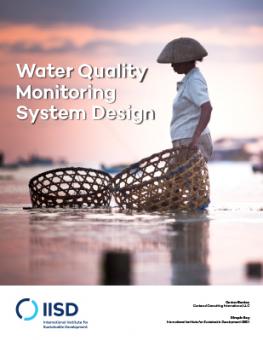
Water Quality Monitoring System Design
Hydrologic Information systems (HISs) are systems for measuring, processing, storing and disseminating interlinked aspects of watershed data including the quantity and quality of climate, surface water, and groundwater. This research highlights the crucial role of HISs in the wise management of water resources.
The International Institute for Sustainable Development (IISD) has been highlighting the need to address water-energy-food (WEF) challenges in the contexts of communities and watersheds to ensure that ecosystems comprising land and water systems are managed for their full range of benefits, ensuring these critical components of human security.
A key component of managing WEF security is understanding the component systems, how they are functioning and how they respond to development, climate and other pressures. To effectively manage WEF security for a community or region, one needs to monitor and understand each of the three systems. Understanding each system accurately in turn relies on monitoring and reporting of system parameters. To provide guidance on effective and high-quality monitoring, this report focuses on the details of water monitoring, including issues such as monitoring system design, site selection, monitoring frequency, reporting, etc. to enhance its ability to inform water and watershed management.
Hydrologic Information systems (HISs) are systems for measuring, processing, storing and disseminating interlinked aspects of watershed data including the quantity and quality of climate, surface water, and groundwater. This report explains the key components of an HIS in the context of mining development, linking to the need for HIS to better understand and management for overall WEF security. The report provides detailed guidance on water monitoring as a means of measuring and managing the benefits that contribute to regional security. Characterization of water systems requires monitoring of the flow, storage and use of water, and comprehensive watershed monitoring inevitably incorporates socioeconomic parameters along with the more typical biophysical ones. This research highlights the crucial role of HISs in the wise management of water resources.
Participating experts
You might also be interested in
What to Expect at Plastics INC-5
Q and A with Tallash Kantai of Earth Negotiations Bulletin on INC-5.
The Chemical Analysis of Fresh Water (Third Edition)
This publication describes the protocols used in the IISD Experimental Lakes Area Analytical Service Laboratory for the measurement of chemical constituents in freshwater samples.
IISD Annual Report 2023–2024
While IISD's reputation as a convenor, a trusted thought leader, and a go-to source on key issues within the sustainable development field is stronger than ever, the work happening outside the spotlight is just as valuable.
The Case of Eco-Certification in Manitoba's Commercial Fisheries
Manitoba commercial fisheries stand to benefit from obtaining eco-certification.